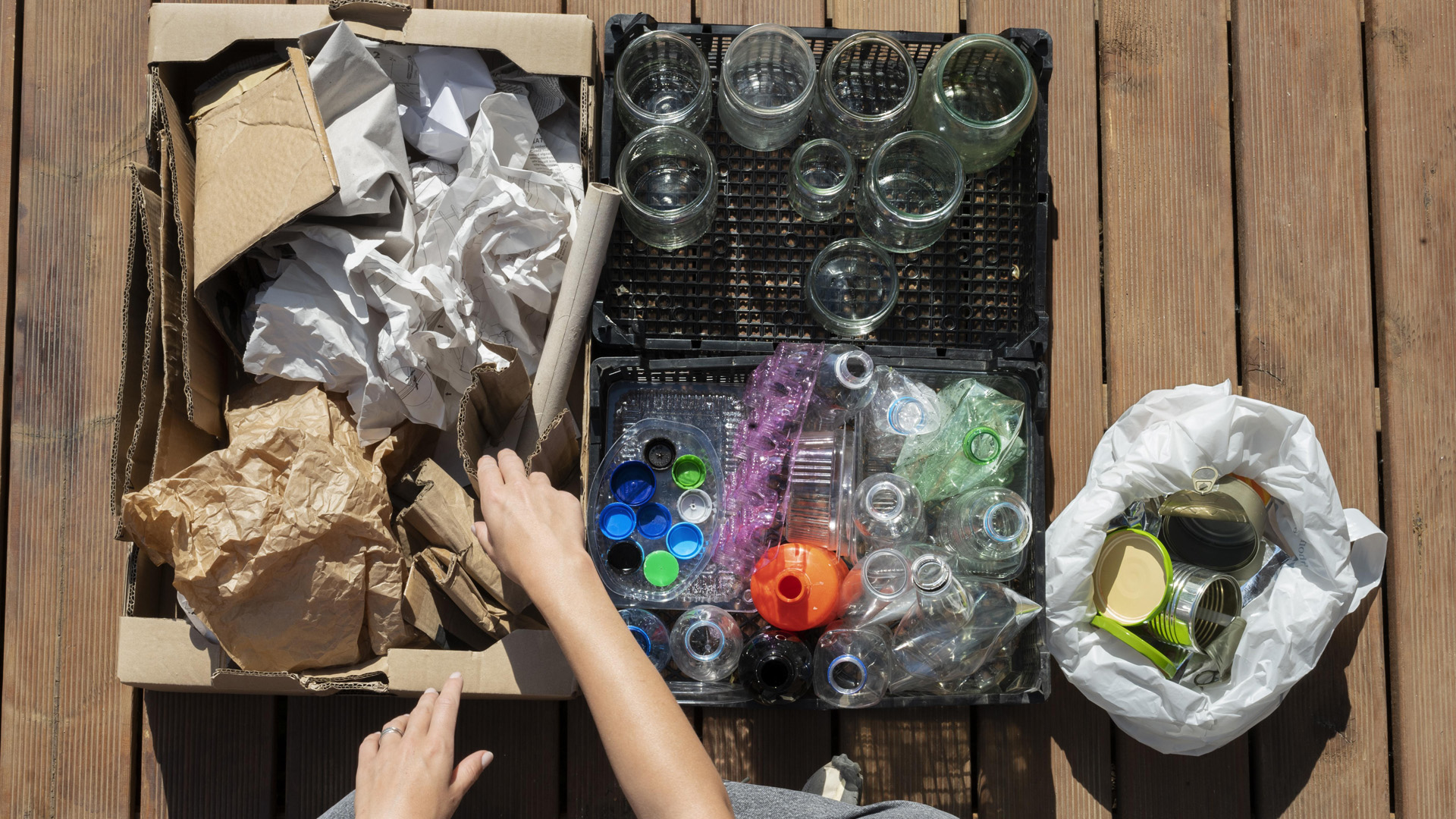From Trash to Treasure: Unconventional Ways People Are Making Money from Waste

In today’s consumer-driven society, waste has become an ever-growing concern. The global population produces billions of tons of waste each year, with much of it ending up in overflowing landfills, oceans, and incinerators.
Yet amidst this grim reality, a quiet revolution is underway. Entrepreneurs, artists, and innovators across the world are turning trash into treasure—not just in a metaphorical sense, but in highly profitable and sustainable ways.
Gone are the days when garbage was considered worthless. Today, what we discard could very well be someone’s raw material, startup idea, or even a livelihood. As environmental awareness deepens and circular economy principles gain traction, people are discovering ingenious ways to profit from what others throw away. This article explores how waste is becoming a valuable resource and highlights ten unconventional ways people are transforming it into economic opportunity.

1. The Rise of Upcycled Fashion
Fast fashion has long been blamed for producing massive textile waste. According to the Ellen MacArthur Foundation, the equivalent of one garbage truck of textiles is landfilled or burned every second. But out of this crisis, a movement of fashion entrepreneurs is emerging.
Brands like Patagonia, Rothy’s, and Girlfriend Collective are repurposing plastic bottles, discarded fishing nets, and fabric scraps into trendy apparel. At a more grassroots level, designers on Etsy and Instagram are creating handmade, one-of-a-kind pieces from thrifted or damaged clothing.
These ventures appeal not only to sustainability-minded consumers but also to those seeking unique fashion, offering a double market advantage.
2. Transforming Plastic into Infrastructure
Plastic waste is one of the most persistent environmental pollutants, but some innovators are giving it new life in the construction sector.
In countries like India, Colombia, and Kenya, entrepreneurs are converting plastic waste into construction bricks and paving materials. Companies like Conceptos Plásticos use a mixture of recycled plastics to manufacture interlocking bricks that are durable, fire-resistant, and easy to assemble—perfect for building low-cost housing.
Elsewhere, engineers are blending shredded plastic into asphalt to build roads that are stronger and longer-lasting than traditional alternatives. This not only cuts costs but diverts thousands of tons of plastic waste from landfills.

3. Gold Mining from E-Waste
Electronic waste—or e-waste—is often called the “urban mine” due to the valuable metals it contains. A single ton of discarded smartphones, for instance, holds more gold than a ton of gold ore.
Enterprising individuals and startups have found ways to extract precious metals like gold, silver, copper, and palladium from circuit boards, processors, and cables. In some parts of Africa and Asia, informal recyclers have mastered the process using basic tools, though safer, more eco-friendly techniques are now emerging.
Businesses like EnviroLeach Technologies are developing non-toxic solutions to harvest these materials at scale, turning obsolete gadgets into a literal goldmine.
4. Food Waste Ventures: From Spoils to Sales
One of the most heartbreaking forms of waste is edible food. Every year, roughly one-third of all food produced globally—worth about $1 trillion—is wasted. But there’s growing momentum to capture this value.
Companies like Too Good To Go and OLIO connect users with surplus food from restaurants and stores at discounted prices. Meanwhile, foodpreneurs are transforming blemished produce or expired goods into soups, sauces, or dried snacks.
Startups are even turning food scraps into biodegradable packaging, cosmetics, and plant-based leather. Banana peels, coffee grounds, and avocado pits, once destined for the trash, are now inputs for highly marketable products.
5. Turning Trash into Art
Around the globe, artists are reimagining discarded items as mediums for expression. Known as “trash artists,” these creatives use everything from broken electronics to plastic bottles and scrap metal to create stunning sculptures, murals, and installations.
Not only do these works highlight issues of overconsumption and pollution, but they often command significant value in galleries and art festivals. Portuguese artist Bordalo II, for instance, constructs massive animal sculptures entirely out of waste materials and sells them to collectors and museums worldwide.
Beyond aesthetic value, this form of art can be a powerful social commentary—while generating income.
6. Composting and Organic Waste Collection
With urban gardening and organic farming on the rise, compost is in high demand. Entrepreneurs are capitalizing on this by launching compost collection services and selling enriched soil to local growers.
Some businesses partner with restaurants and cafes to collect food scraps, coffee grounds, and biodegradable packaging, turning them into nutrient-rich fertilizer through microbial composting or vermiculture (worm farming).
In addition, black soldier fly larvae farming is becoming a lucrative venture. These insects consume organic waste and produce protein-rich feed for livestock and pets, creating a circular system that reduces waste and generates revenue.
7. Furniture and Decor from Discards
Whether it’s reclaimed wood from demolished buildings or abandoned industrial parts, creative entrepreneurs are repurposing these materials into high-end furniture and decor.
In cities like Brooklyn, Berlin, and Bangalore, local artisans are crafting tables, shelving units, lighting, and art pieces using salvaged materials. This trend, often called “urban mining”, gives old materials a new lease on life while catering to consumers who value craftsmanship, sustainability, and vintage charm.
With platforms like Facebook Marketplace, Etsy, and Instagram, makers have more opportunities than ever to reach buyers directly.
8. Eco-Bricks and Bottle Construction
An increasingly popular method of reusing plastic is the eco-brick—a plastic bottle tightly packed with non-biodegradable waste to create a reusable building block.
These bricks are being used by communities around the world to build walls, garden beds, and even schools. Eco-brick programs are especially popular in Southeast Asia, Africa, and South America, where waste infrastructure is lacking and creative, low-cost building methods are in demand.
Some organizations reward contributors with cash or vouchers, effectively turning household trash into a community currency.
9. Reselling Found or Discarded Items
Dumpster diving has evolved into a surprisingly profitable practice in many developed countries. Items that are tossed out—furniture, electronics, clothing, or even unopened groceries—are often still in usable condition.
Some savvy individuals clean, repair, and resell these items online or at flea markets. Others specialize in reverse logistics, buying liquidated or returned inventory from large retailers and flipping it for profit.
YouTube and TikTok have helped normalize and glamorize this trend, with “trash-to-cash” influencers sharing their hauls and earnings, inspiring others to follow suit.
10. Waste-to-Energy Microbusinesses
In parts of Africa and Asia, small-scale waste-to-energy systems are being deployed to provide off-grid power. Organic waste, particularly food and animal waste, can be fed into biodigesters that produce biogas for cooking and lighting.
Startups in rural India and East Africa offer biodigester kits that turn cow dung or kitchen waste into methane, allowing families to reduce reliance on expensive fuels like kerosene or wood.
While still niche, these systems have enormous potential in remote or underserved areas—and they create micro-entrepreneurship opportunities in waste management and energy distribution.
